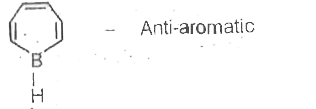Choose the incorrect match
Property : Highly selective - Means of transport : Facilitated diffusion
Property : Transport saturates - Means of transport : Active transport
Property : Uphill transport - Means of transport : Facilitated diffusion
Property : Slow process - Means of transport : Simple diffusion
To solve the question of choosing the incorrect match, let's analyze each option step by step:
1. Option 1: Facilitated Diffusion - Highly Selective
- Explanation: Facilitated diffusion is a type of passive transport that allows specific substances to cross membranes with the assistance of special proteins (transport proteins). It is indeed highly selective as it only allows certain molecules to pass through.
- Conclusion: This match is correct.
2. Option 2: Active Transport - Transport Saturates
- Explanation: Active transport involves the movement of substances against their concentration gradient (from low to high concentration), which requires energy (ATP). When all available carrier proteins are occupied, the transport rate reaches a maximum, indicating saturation. Thus, this property is true for active transport.
- Conclusion: This match is correct.
3. Option 3: Facilitated Diffusion - Uphill Transport
- Explanation: Facilitated diffusion is a passive process that moves substances along their concentration gradient (from high to low concentration). It does not involve movement against the gradient (uphill transport). Therefore, this statement is incorrect as facilitated diffusion cannot be classified as uphill transport.
- Conclusion: This match is incorrect.
4. Option 4: Simple Diffusion - Slow Process
- Explanation: Simple diffusion is indeed a slower process compared to facilitated diffusion or active transport. Molecules move across the plasma membrane without the aid of proteins, relying solely on their concentration gradient.
- Conclusion: This match is correct.
Final Answer: The incorrect match is Option 3: Facilitated Diffusion - Uphill Transport.
- Explanation: Facilitated diffusion is a type of passive transport that allows specific substances to cross membranes with the assistance of special proteins (transport proteins). It is indeed highly selective as it only allows certain molecules to pass through.
- Conclusion: This match is correct.
- Explanation: Active transport involves the movement of substances against their concentration gradient (from low to high concentration), which requires energy (ATP). When all available carrier proteins are occupied, the transport rate reaches a maximum, indicating saturation. Thus, this property is true for active transport.
- Conclusion: This match is correct.
- Explanation: Facilitated diffusion is a passive process that moves substances along their concentration gradient (from high to low concentration). It does not involve movement against the gradient (uphill transport). Therefore, this statement is incorrect as facilitated diffusion cannot be classified as uphill transport.
- Conclusion: This match is incorrect.
- Explanation: Simple diffusion is indeed a slower process compared to facilitated diffusion or active transport. Molecules move across the plasma membrane without the aid of proteins, relying solely on their concentration gradient.
- Conclusion: This match is correct.
Topper's Solved these Questions
Similar Questions
Knowledge Check
Choose the correct match/matches
A18 ml of H2O at 4∘C−NA molecule of H2OB11.2 L of CO2 at - NA2 molecule of CO2273∘C and 1 atmC56 g of Fe57−NA atomD5.6 L of CH4 at STP - 4 g weightThe incorrect match is
A B
B C
C D
D
Choose incorrect match pair form given pairs
Aanthocephalus - inter petiolar stipulesBlathyrus - foliaceous stiplusesCpolygonum - ochraceate stipluesDacacia - tendrillar stipules
Choose incorrect match w.r.t. different classes of fungi
View SolutionChoose the incorrect pair from the matches given below.
View SolutionChoose incorrect match amongst restriction enzymes listed in column l and type of ends produced in column ll
View SolutionIncorrect match is
View SolutionIncorrect match is
View Solution
